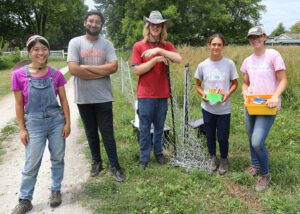The American Cancer Society (ACS) released Breast Cancer Statistics, 2024, the organization’s biennial update on breast cancer occurrence and trends in the United States. The new report finds breast cancer mortality rates overall have dropped by 44% since 1989, averting approximately 517,900 breast cancer deaths. However, not all women have benefited from this progress, notably American Indian and Alaska Native (AIAN) women, whose rates have remained unchanged over the past three decades. Also concerning is the continued upward trend in breast cancer incidence, rising by 1% annually during 2012-2021, with the steepest increase in women younger than 50 years (1.4% per year) and Asian American/Pacific Islander (AAPI) women of any age (2.5%-2.7% per year). These important findings are published in CA: A Cancer Journal for Clinicians, alongside its consumer-friendly companion, Breast Cancer Facts & Figures 2024, available on cancer.org.
“The encouraging news is breast cancer mortality rates continue to decrease thanks to advances in early detection and treatment,” said Angela Giaquinto, associate scientist, cancer surveillance research at the American Cancer Society and lead author of the study. “But future progress may be thwarted by increasing incidence, especially among younger women, and consequences of the COVID-19 pandemic, such as delayed diagnosis due to interruptions in screening.”
Breast cancer is the most common cancer among U.S. women after skin cancer and the leading cause of cancer death in Hispanic women. In 2024, an estimated 310,720 new cases of invasive breast cancer will be diagnosed in women, and approximately 42,250 women are expected to die from the disease. While rare, this year, 2,790 men will also be diagnosed with breast cancer, and 530 men will die from the disease.
For the report, researchers analyzed population-based cancer incidence and mortality data collected by the National Cancer Institute’s Surveillance, Epidemiology, and End Results (SEER) program, the Centers for Disease Control and Prevention’s National Program of Cancer Registries (NPCR), and the National Center for Health Statistics. Combined SEER and NPCR data provided by the North American Association of Central Cancer Registries (NAACCR) were the source for short-term incidence trends (1998-2021) and contemporary incidence rates (2017–2021) by race and ethnicity, age, molecular subtype, state, and stage (SEER Summary).
“Women today are a lot less likely to die from breast cancer, but alarming disparities still remain, especially for Asian American, Pacific Islander, Native American and Black women,” said Dr. William Dahut, chief scientific officer at the American Cancer Society. “These gaps need to be rectified through systematic efforts to ensure access to high-quality screening and treatment for every woman.”
Other key findings from the report include:
- AIAN women have 10% lower breast cancer incidence than White women, but 6% higher mortality, and only 51% of AIAN women 40 years or older had a mammogram in the past two years compared to 68% of White women.
- Breast cancer in women under 50 years has increased in AAPI women by 50% since 2000, surpassing the rate in young Hispanic, AIAN, and Black women to become the highest rate alongside White women (both 86 per 100,000).
- Black women continue to have a 38% higher breast cancer mortality rate than White women, despite a 5% lower incidence. Black women also have lower survival than White women for every breast cancer subtype and stage of diagnosis except localized disease, with which they are 10% less likely to be diagnosed (58% versus 68%).
To address ongoing cancer disparities in Black women, the ACS launched the VOICES of Black Women study in May 2024. The study aims to enroll over 100,000 Black women in the U.S. between the ages of 25 and 55 from diverse backgrounds and income levels who have not been diagnosed with cancer to better understand cancer risk and outcomes. For more
information and to participate, visit voices.cancer.org.
“Building upon the progress we have made in reducing breast cancer mortality rates requires ensuring more individuals have access to breast cancer screenings,” said Lisa A. Lacasse, president of the American Cancer Society Cancer Action Network (ACS CAN), the advocacy affiliate of the American Cancer Society. “Through cooperative agreements with all 50 states, tribal organizations and territories, the National Breast and Cervical Cancer Early Detection Program (NBCCEDP) has been a lifeline for limited-income, uninsured and underinsured women, providing them with critical screenings and treatment. Congress has a chance to pass the Screening for Communities to Receive Early and Equitable Needed Services (SCREENS) for Cancer Act, which would reauthorize the NBCCEDP and expand its reach to more people who may not otherwise be screened. We urge Congress to take this step towards saving lives from cancer while reducing costs for our health care system.”
Rebecca Siegel is senior author of the report. Other ACS authors participating in the study include Dr. Ahmedin Jemal, Dr. Hyuna Sung, Jessica Star and Dr. Robert Smith.
More information on breast cancer can be found here.
***Courtesy of the American Cancer Society***
















